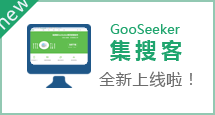Enable the second replica
In order to extract all rows of a list, the second replica must be enabled via clicking the right-button popup menu over the Replica Management region. Switch the property mapping table to that of the second replica. Then the mapping operations described in the previous section should be repeated once again.
Exercises
Following the steps in previous section, map company information of the second row of the company list to the properties respectively. The following node serial numbers would be filled into the column node.
| Node | Property Name | Key | Clue | Url | Block | Null |
| 1942 | name | Validation & Data | No | No | No | No |
| 1941 | company page | Validation & Data | Yes | Yes | No | No |
| 1946 | introduction | Validation & Data | No | No | No | No |
| 1955 | business type | No | No | No | No | No |
| 2116 | register date | No | No | No | No | No |
| 2104 | register capital | No | No | No | No | No |
| 2090 | credit | No | No | No | No | No |
Note: The serial numbers of DOM nodes you got when you do this exercise might be different from those shown here because the structure of the target HTML page might be changed.
Note: You should not worry about changing of the serial numbers too much. The serial numbers are not recorded into the data schema and data and clue extraction rules so that the changes might not impact the validation of them. In most cases, after you have uploaded the data schema onto the MetaCamp server for a long time, you get different serial numbers when you download and edit it again with MetaStudio. The MetaStudio can handle the changes normally. But it is not the case all the way. If the structure of the page would have been changed greatly, MetaStudio would complain about not being able to position some properties. In this case, you must re-map the properties.
